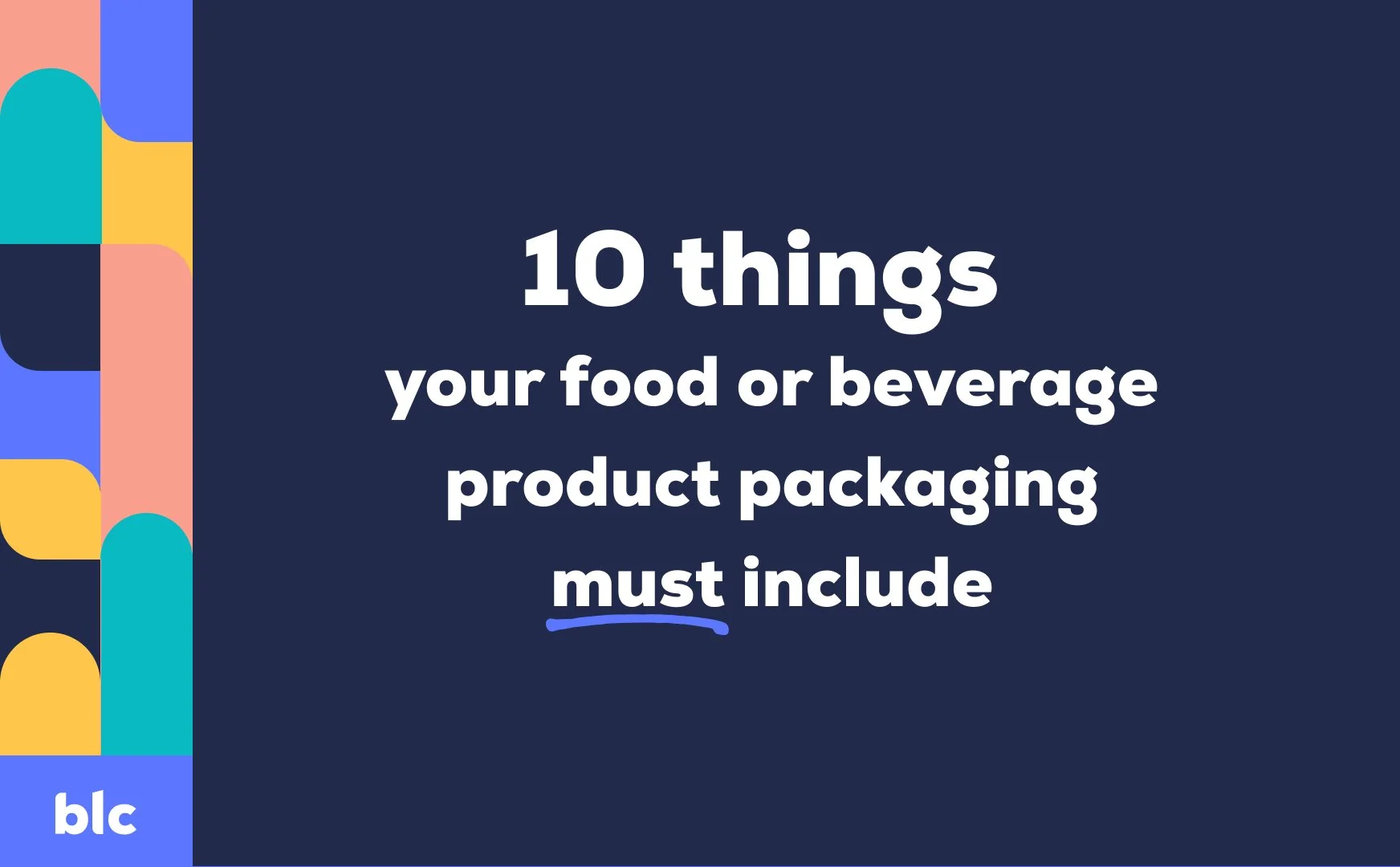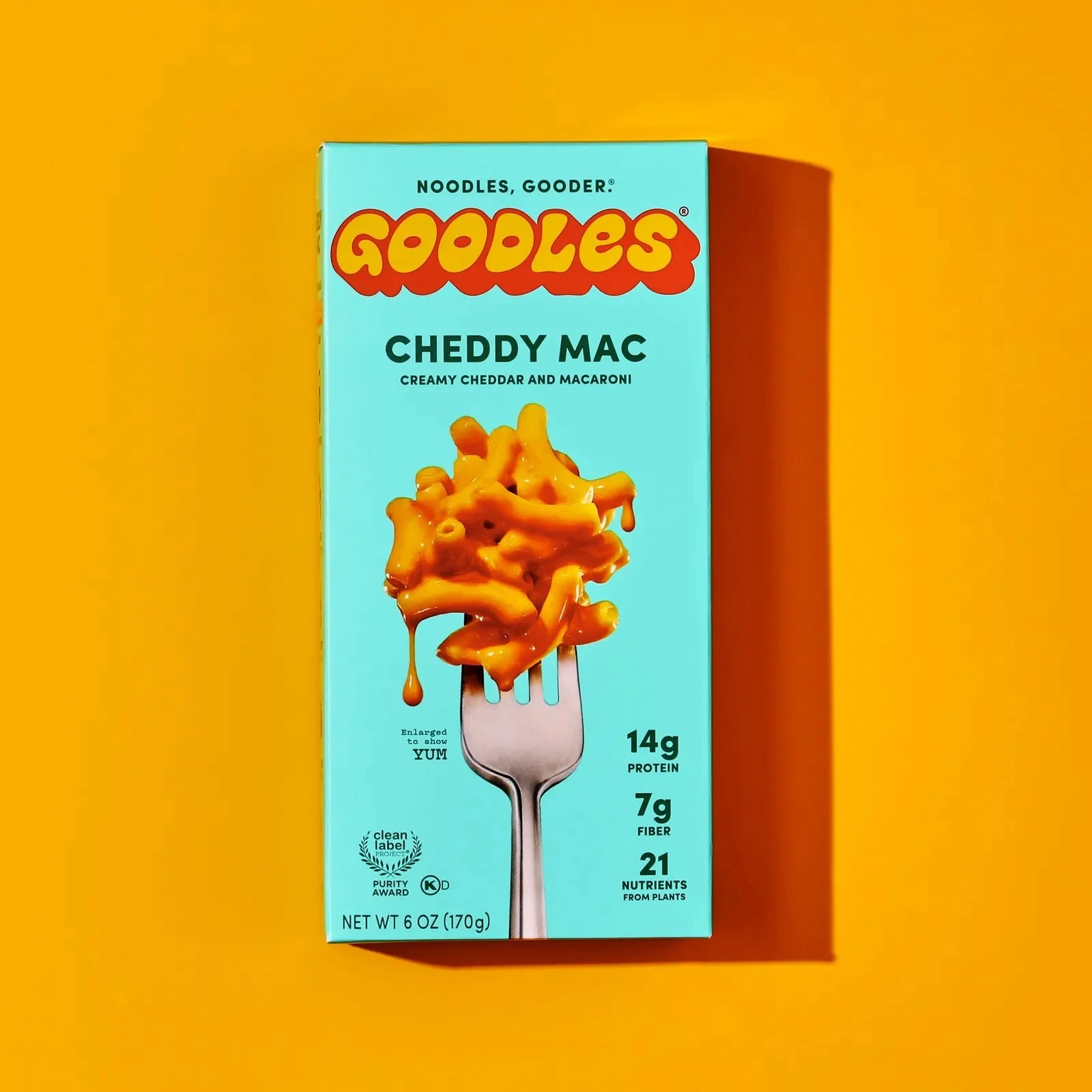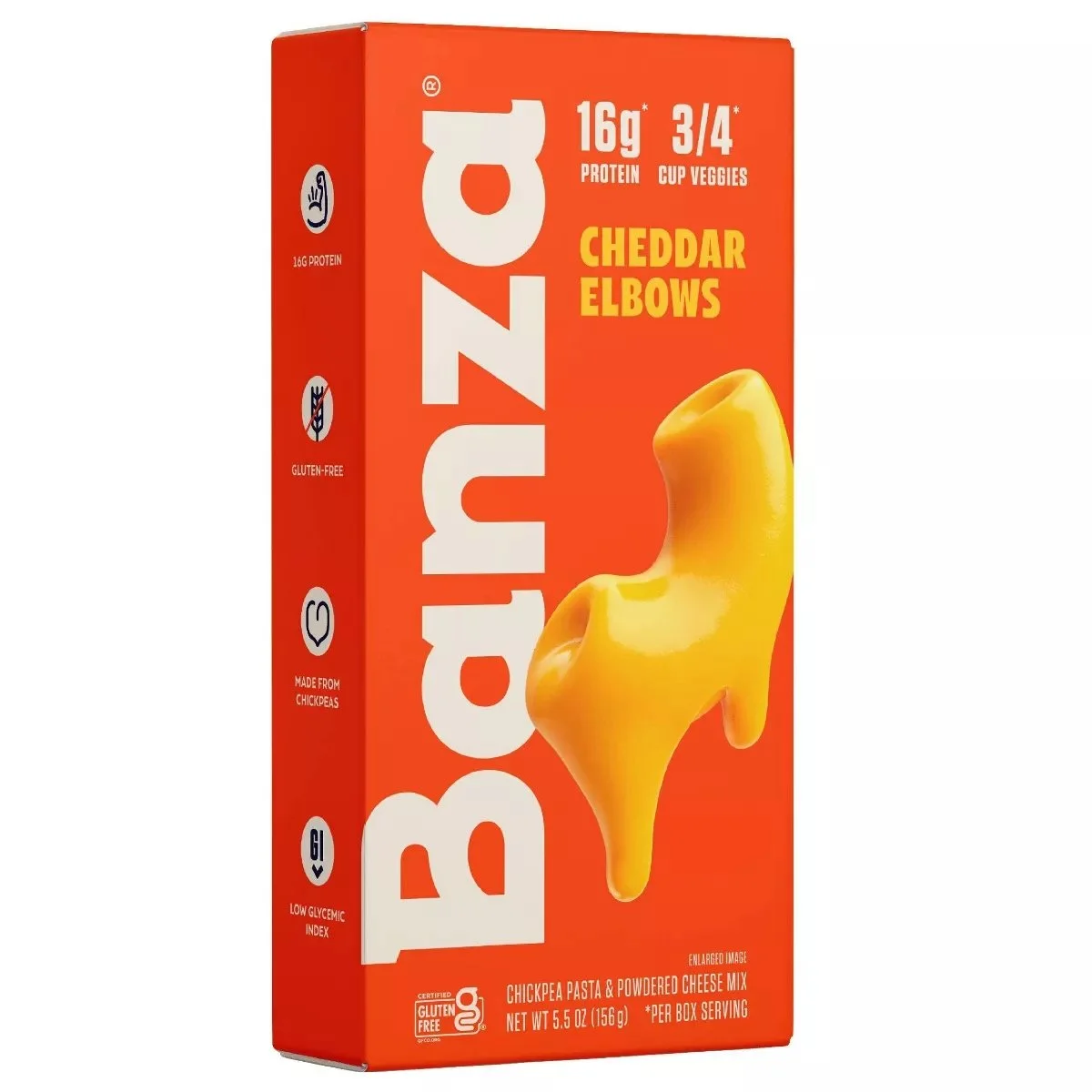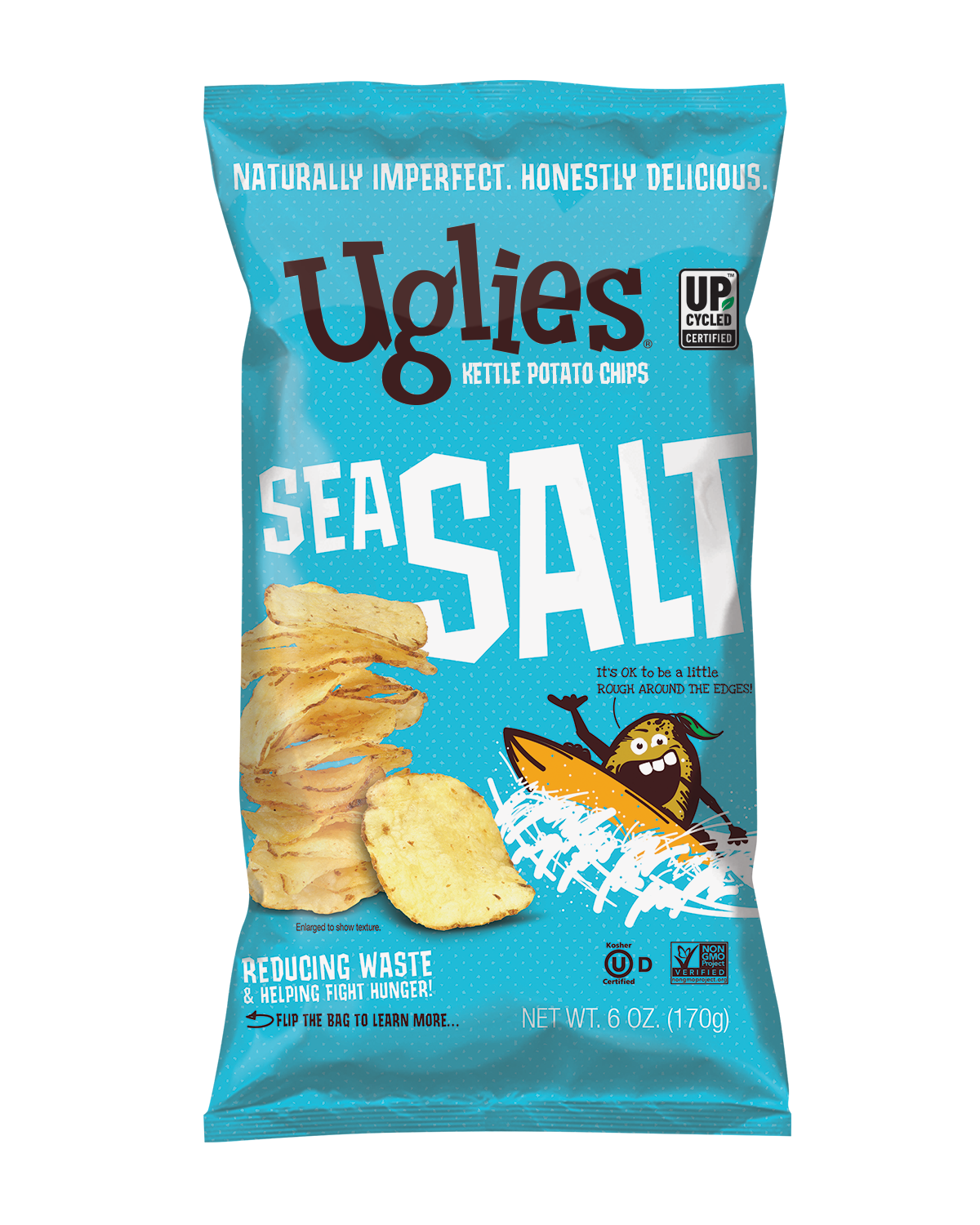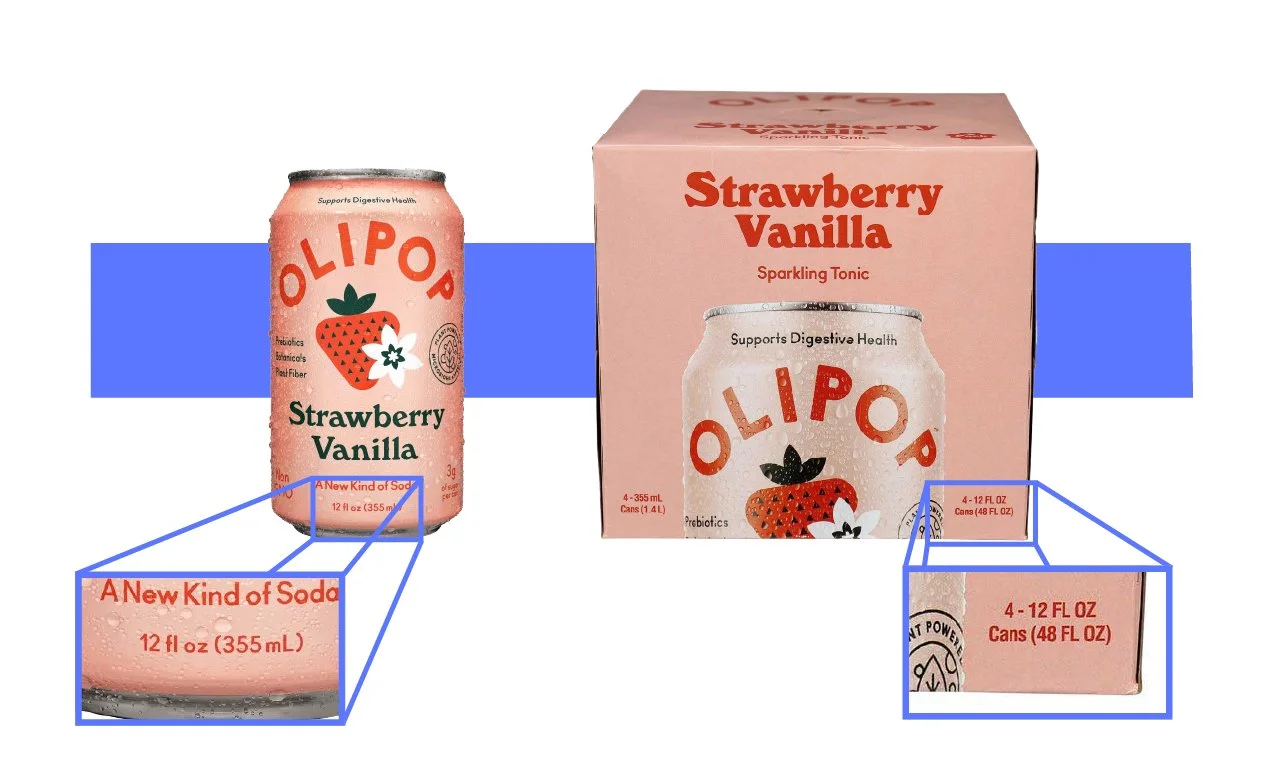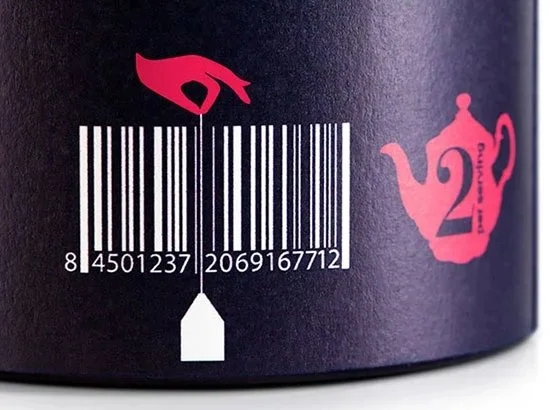10 things your food or non- alcoholic beverage product packaging MUST include
If it’s your first time launching a new food or beverage product, the first thing you need to know is that the FDA has extremely specific labeling requirements for your product packaging. These are outlined in a pretty detailed and dense document in the Code of Federal Regulations, 21 CFR Part 101 (https://www.ecfr.gov/current/title-21/chapter-I/subchapter-B/part-101).
Don’t let this overwhelm you or slow you down! I’ve put together a helpful list of the 10 things your packaging must include as outlined within these requirements, so you can check them off your list and keep moving forward with an amazing packaging design.
common name of the food or drink
The CFR refers to this as the “Statement of Identity.” The common name of the food or drink gives a clear, concise layman's description of what the product is. This must appear on the front of your packaging in bold, prominent type parallel to the base of the packaging. Some products, such as peanut spreads, frozen dinners, and fruit/vegetable juice are legally mandated to be phrased a certain way, so cross-check that in the CFR here.
Don’t let that limit your creativity though! You can still give your product a creative name, as long as you also include a legible layman’s description. Check out Cheddy Mac from Goodles®. They use a creative product name, “Cheddy Mac” coupled with the layman’s description: “creamy cheddar and macaroni.”
where to include: front/primary panel, optionally repeat on the right side panel and/or back panel
*Also note that if your product comes in multiple forms (and the product isn't clearly visible through a window in the packaging), then the form must be included (i.e. diced, frozen, whole, sliced).
2. brand name + logo
While this isn’t technically required by the CFR, it is an absolute necessity to build brand recognition. You should include your logotype on the front panel of your packaging, and you may want to repeat the logotype and/or the logomark on the right side panel and back as well. You can get a bit more creative about scale and placement of your logo however.
I love this example from Banza®. The scaled up, rotated logo makes a huge visual impact. Subtle details like pushing the macaroni in front of the logo also add umph.
where to include: front panel, right side panel, back
3. Flavor or variety
This should be prominent on the front of your packaging. In some cases, you may want it more prominent than your logo and product name. This is especially true when your product comes in many varieties and flavor is the key piece of distinguishing information your audience needs to make a quick choice. The Uglies® potato chips packaging is a great example.
where to include: front panel, right side panel, back
4. Net quantity of contents with units
The CFR is very specific about the declaration for net quantity of contents with units. This declaration must be adequately spaced from the other elements*, located in the bottom 30% of the label area, parallel to the bottom of the package using bold or contrasting with minimum height and aspect ratio requirements defined in Subpart A p101.7 (h) and Subpart A p101.7 (i).
Let's talk about solids first. For package contents less than 4lbs, units should be expressed in ounce (oz) followed in parentheses by weight in pounds (lb). For example, acceptable options for a solid weighing 1.5 lb are “Net Wt. 24 oz (1 lb 8 oz),” “Net Wt. 24 oz (1-1⁄2 lb),” or “Net Wt. 24 oz (1.5 lb) (see Subpart A, p-101.7(j)). For packages weighing more than 4 lbs, units should be expressed in lbs with the remainder listed in oz or fractional lbs. For example, a package weighing 6.75 lb can be listed as “ Net Wt. 6.75 lb” or “Net Wt. 6-¾ lb“ or “Net Wt. 6 lb 12 oz” (see Subpart A, p-101.7(k)). Solids use the declaration net weight, net, or net wt. but this is optional.
For liquids under 1 gallon, net contents are expressed by volume in units of fluid ounce (fl. oz) followed in parentheses by the largest whole units (pint, quart, gallon). For example, acceptable options for a liquid measuring 1-¾ quarts are Net contents 56 fluid ounces (1 qt 1-1⁄2 pt)” or as “Net 56 fluid oz (1 qt 1 pt 8 fl oz)”. For liquids over 1 gallon, express volume in the largest whole units (pint, quart, gallon) with the remainder expressed as a fraction or decimal of that unit, or as the next largest whole units in descending order of size. For example, 2-¾ gallons liquid shall be expressed as “Net contents 2-¾ gal,” “Net contents 2.75 gal,” or “Net contents 2 gal 3 qt” (see Subpart A p-101.7(j)). Liquids use the declaration net or net contents, but once again this is optional.
Multi-packs require a primary declaration including the quantity of individual units and the weight or volume of each unit, plus the total volume in parenthesis. For example, a 4-pack of 12 fl oz bottles should be written as “4-12 fl oz bottles (48 fl oz)”. You can optionally include a metric declaration by weight (solids) or volume (liquids).
*The spacing is precisely defined in Subpart A p-101.7(f) in relation to the letter N in your type of choice.
where to include: lower third of the front panel
5. ingredients list
Ingredients are listed by common name, from highest to lowest amount by weight. There are a few nuances here, particularly simplifications you can make (for example, skim milk, concentrated skim milk, reconstituted skim milk, and nonfat dry milk may be declared simply as “skim milk” or “nonfat milk”). Check out the detailed instructions here.
Your ingredient list must also include allergen declarations (if applicable). The FDA has declared the following foods major food allergens requiring allergen declaration: milk, eggs, peanuts, wheat, soybeans, sesame, fish, crustacean shellfish, and tree nuts. This list can be updated by the FDA so always check the latest list. Allergen declarations can be made within the ingredient list in parentheses following the ingredient name e.g. lecithin (soy) or in a “contains” statement following the ingredient list, e.g. “Contains soy”.
where to include: on the right side panel or back panel (this will be your “information panel” as described in the CFR).
6. name + location of your business
You must include the name and location of your business, including the legal business name, street address, city, state, and zip code. (Although you can leave out the street address if it is listed in an up-to-date phone directory.) If you are not the manufacturer of the product, you must include the phrase “manufactured for” or “ distributed by” before your business name. See section 101.5 for details.
where to include: on the right side panel or back panel (your “information panel” as described in the CFR)
7. nutrition facts label
The nutrition fact label following must follow the official guidelines in outlined in section 101.9. The FDA also released this extremely helpful supplemental document that explains this in a more visual way that is easier to digest.
Note that there are a few different nutrition fact display formats. The format you can use is guided by the type and size of packaging you are working with. The vertical format is the preferred format except in a few specific instances:
When there is insufficient vertical space (i.e. less than 3 inches vertical space) the tabular format can be used. See section 101.9(d).
When there are dual preparations i.e. cereal dry or with milk the dual column should be used. See section 101.9(e).
When a product contains insignificant amounts of 8+ of the main label categories, the simplified display format may be used. See section 101.9(f).
Foods for children under 3 including infants under 12 mo are subject to their own label requirements and should use the infant label. See section 101.9(j).
Small or intermediate sized packages (less than 12 sq in of label area or less than 40 sq in of label area with a format that does not allow for the vertical format) can use the tabular display for small packages or the linear display. The linear display can only be used as a last resort when a tabular display cannot fit. See section 101.9(j){13}.
where to include: right side panel or back panel (your information panel)
8. UPC-A barcode
You should purchase an official UPC code from GS1 at https://www.gs1us.org/. This allows people to globally track your unique product throughout the supply chain and safeguards you against counterfeit products. A single code starts at $30 and you get discounts for buying bundles of codes (e.g. 10 for $250 with a $50 annual renewal fee). Keep in mind that each color, flavor, variety, and size of your product should have its own unique UPC code, so estimate how many you will need in advance and purchase a bundle if appropriate. You can get cheaper upc codes from unofficial sources, but those codes are recycled and therefore not guaranteed to be unique, which renders them pretty much useless.
Once you have the code, you can use a free online UPC-A barcode generator to create a downloadable .PNG or .ai barcode image for your packaging. Be sure to use either the png or vector format so you retain a transparent background and change the color as needed. There are many free online generators. This helpful video steps you through the whole process. You can even get clever with UPC bar codes, such as this Gaiety tea barcode, as long as it remains legible, high contrast, and scannable.
where to include: right side panel or back panel
9. safe handling instructions/ food safety disclaimers
Always check if your product has food safety labeling requirements as listed in section 101.17. Some examples of packaged products that require food safety labeling requirements are self-pressurized containers, protein powders, iron supplements, foods containing psyllium husk, and unprocessed juices.
where to include: primary display panel (front) or information panel (right side or back)
10. clear, concise instructions
Instructions aren't actually mandated by the FDA, but in this day and age people expect them and will get annoyed if you omit them. If possible, use helpful iconography and illustrations to supplement written instructions and make your product more universally accessible. They can even be simple one-word step by step instructions, but always lower the cognitive load required to use your product and give your target audience a clear plan of action (even if it seems obvious to you!).
The two mac n’ cheese examples below give some ideas for different directions to go in with your instructions. The Annie’s® microwavable mac uses pictoral instructions, while the Gooder® mac uses written instructions loaded with personality. Instructions are definitely an opportunity to infuse your brand personality.
where to include: back panel or left side panel
Now that you have a guide to the 10 things you MUST include in your packaging, check out my recommendations for the 5 things that will set your packaging apart (coming soon!).


